Drilling a hole in a delicate china plate might seem like a daunting task, but with the right tools and techniques, it can be done safely and effectively. Whether you’re creating a custom piece of decor or a unique jewelry organizer or repurposing a plate for a creative project, taking the proper precautions is essential to avoid cracks or damage.
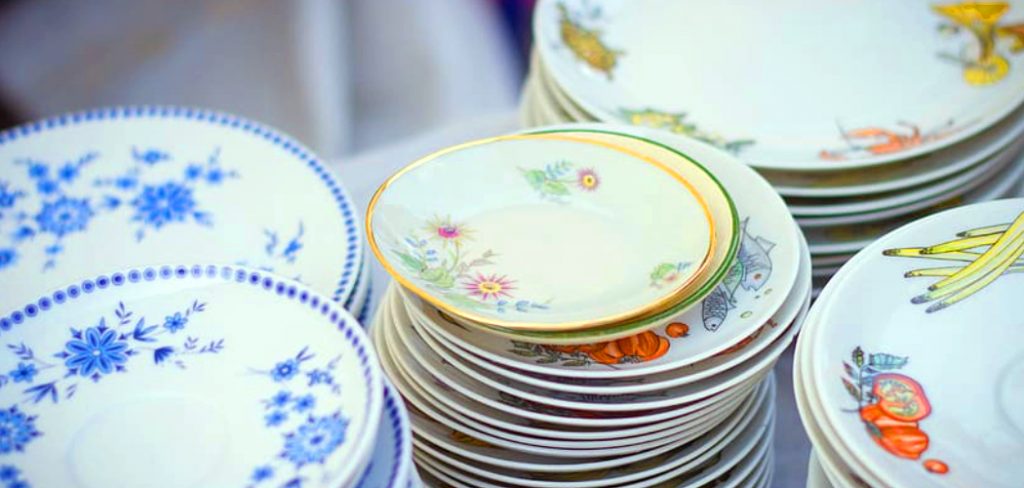
This guide on how to drill a hole in a china plate will walk you through the process step by step, ensuring a successful outcome.
Why Drill a Hole in a China Plate?
Before we dive into the how of drilling a hole in a china plate, let’s first discuss the why. There are many reasons why you might need or want to drill a hole in your delicate dishware. Some common uses include:
- Creating a hanging plate display.
- Making a unique light fixture.
- Crafting custom jewelry such as pendant necklaces or earrings.
- Repurposing damaged plates for mosaic art or other creative projects.
Whatever your reason may be, knowing how to successfully drill through China will open up endless possibilities for your DIY projects.
Tools and Materials Needed:
To successfully drill through a china plate, you’ll need some specific tools and materials. These include:
A Diamond-Tipped Drill Bit:
This is the most important tool for drilling through China, as it is specifically designed to cut through hard materials like ceramic and glass. It has a pointed end with small diamond particles embedded in it, which allow for precise and clean cuts.
Drill:
You’ll also need a power drill to attach the drill bit to. Make sure to use a variable speed drill so you can control the speed at which you’re drilling.
Water:
Water acts as a lubricant and cooling agent when drilling through china. It helps prevent the plate from cracking or breaking due to heat generated by the friction of drilling.
Masking Tape:
Masking tape is used to create a guide for your drill bit on the surface of the china plate, ensuring that your hole is drilled in the desired location.
Safety Glasses:
As with any type of drilling, safety glasses should always be worn to protect your eyes from any flying debris or shards of china that may break off during the drilling process.
7 Step-by-step Guidelines on How to Drill a Hole in a China Plate
Step 1: Choose the Right Drill Bit
Select a diamond-tipped drill bit specifically designed for drilling through hard materials like china or ceramic. Diamond-tipped bits are highly effective for this task because they can cut through the dense and delicate surface of a china plate without causing cracks or damage.
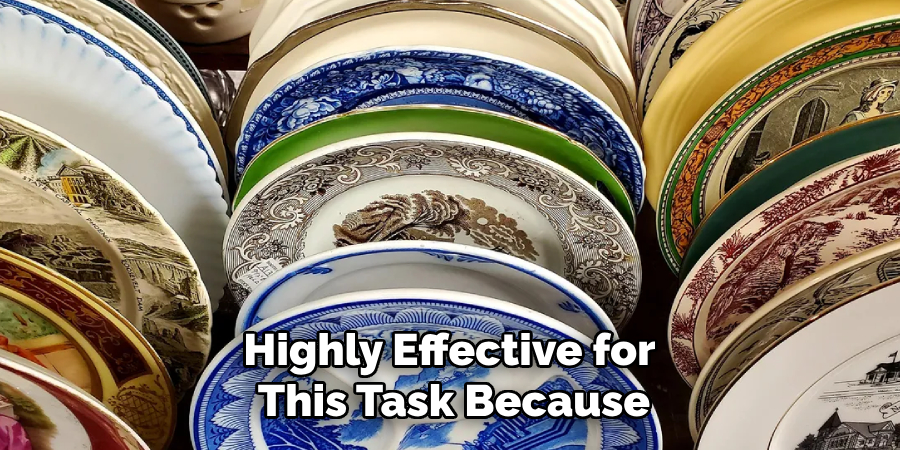
Ensure the drill bit is the appropriate size for the hole you need based on the purpose of the project. Having the correct drill bit is crucial for achieving a clean and precise result.
Step 2: Prepare Your Plate
Before starting the drilling process, ensure the plate is clean and completely dry. Place a piece of masking tape over the spot where you plan to drill. The masking tape will help prevent the drill bit from slipping and protect the surface of the china plate.
Secure the plate on a stable surface using a padded clamp or place it on a soft, nonslip mat to avoid movement during drilling. Proper preparation ensures both precision and safety throughout the process.
Step 3: Tape the Drilling Area
Using additional masking tape, carefully cover the drilling area on both sides of the china plate. This double layer of tape will further reduce the risk of cracking or chipping during the drilling process. Ensure that the tape is firmly pressed down to create a smooth surface for the drill bit to work with.
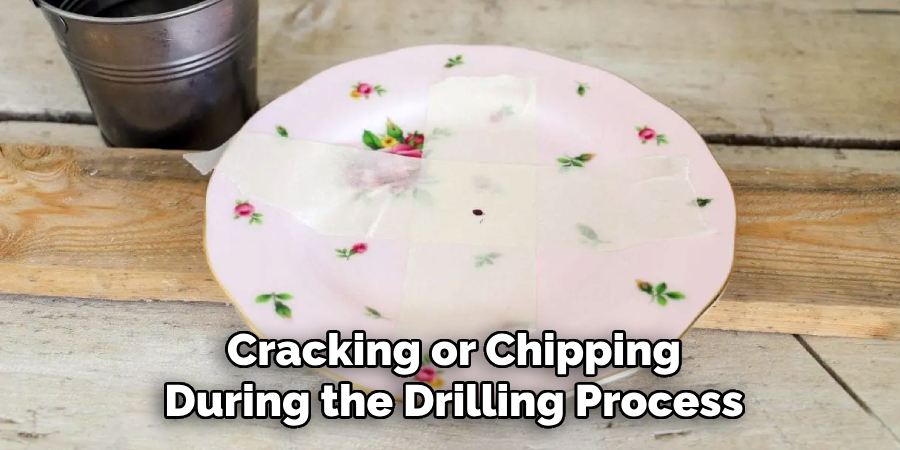
Mark the exact drilling point on the taped area using a fine-tipped marker to guide your drilling and maintain accuracy. Properly taping the area is crucial for achieving clean, professional results.
Step 4: Prepare for Drilling
Before drilling, ensure that your workspace is stable and well-lit to maintain precision and safety. Secure the china plate firmly on a soft, non-slip surface, such as a folded towel or a rubber mat, to prevent it from moving during the drilling process. Attach a diamond-tipped drill bit to your drill, as this type of bit is specially designed for hard, brittle materials like porcelain or china.
Adjust the drill to a low speed setting—this reduces the risk of overheating and minimizes stress on the plate. Don protective gear, including safety goggles and gloves, to shield yourself from any debris that may be produced. By carefully preparing for the drilling phase, you can ensure optimal results with minimal risk of damage.
Step 5: Drill at a Low Speed
Position the drill bit at the marked spot on the plate, holding the drill at a steady, perpendicular angle. Begin drilling at the lowest speed setting, applying light and consistent pressure. Avoid pressing too hard, as excessive force can crack or shatter the plate.
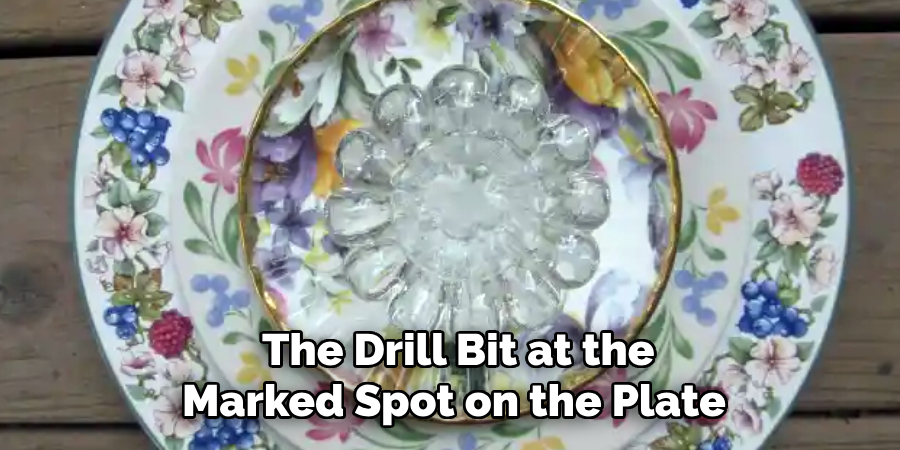
Periodically pause to allow the drill bit and the plate to cool down, as heat build-up can weaken the material. If needed, use a small amount of water to keep the surface and drill bit cool throughout the process. Patience is essential here—take your time to create a clean, precise hole.
Step 6: Drill the Hole
Once you’ve ensured proper alignment and a stable working surface, steadily begin drilling into the plate. Keep the drill at a low speed, gradually increasing pressure as the bit starts to penetrate the material. Maintain a consistent angle and avoid abrupt movements to minimize the risk of cracks. Continue drilling until the hole is fully bored through the plate.
Once complete, carefully lift the drill away from the surface. Inspect the hole for any rough edges or imperfections and smooth them out using sandpaper or a deburring tool if necessary. Always prioritize safety and precision during this step.
Step 7: Finish and Clean Up
After completing the drilling process and smoothing any rough edges, take a moment to clean the workspace. Remove any dust, debris, or scrap material left from drilling. Use a soft cloth to wipe down the surface of the plate, ensuring it is free of particles that could interfere with further work or finishing touches.
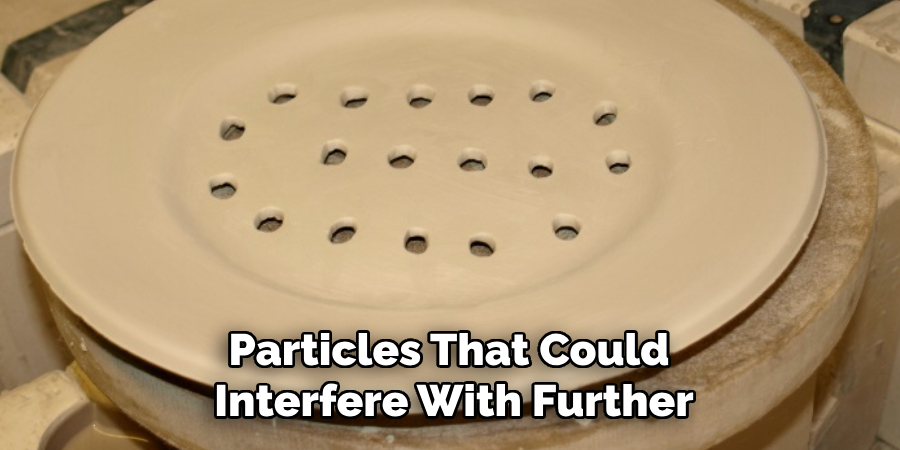
Properly store the drill and any tools used, ensuring they are clean and in good condition. Double-check the drilled hole to confirm it meets the intended specifications before proceeding with your project. Taking these final steps on how to drill a hole in a china plate will ensure a tidy and safe environment, as well as a quality end result.
Frequently Asked Questions
Q: Can I Use a Regular Drill Bit to Drill a Hole in a China Plate?
A: It is not recommended to use a regular drill bit on china plates as it can easily crack or shatter the delicate material. It is best to use a specialized glass and tile drill bit to prevent damage.
Q: Can I Drill a Hole in Multiple China Plates at Once?
A: It is not recommended to drill multiple china plates at once as it increases the risk of cracking or breaking them. Each plate should be drilled individually with caution and care. The pressure and speed applied while drilling should also be carefully monitored to prevent damage.
Q: What Should I Do if My Plate Cracks While Drilling?
A: If your plate cracks or breaks while drilling, stop immediately and dispose of the broken pieces safely. It is best to start with a new plate and make sure to follow all necessary precautions to avoid any accidents.
Q: Can I Use Any Type of Lubricant for Drilling Into China Plates?
A: No, it is important to use a lubricant that is safe for use on china plates. Oil-based lubricants can leave stains on the plate and may cause damage, so it is best to use a water-based or silicone-based lubricant specifically designed for drilling into delicate materials.
Q: How Can I Ensure a Clean and Smooth Hole While Drilling Into China Plates?
A: To ensure a clean and smooth hole while drilling into china plates, it is important to use a sharp and high-quality drill bit. It should also be used at a slow speed with consistent pressure applied. Additionally, using a lubricant can help reduce friction and prevent cracking or chipping of the plate.
Conclusion
Drilling into delicate materials like china plates requires careful preparation, the right tools, and proper techniques to avoid damage. By using a sharp, high-quality drill bit, applying consistent pressure, and utilizing a suitable lubricant, you can achieve clean, smooth results without compromising the integrity of the material.
Always proceed patiently and follow these guidelines to ensure success while working with fragile items. Thanks for reading this article on how to drill a hole in a china plate.
Specialization:
- Master of wheel-throwing, hand-building, and advanced glazing techniques
- Focus on creating both functional pottery and decorative art pieces
Recognition:
- Celebrated by collectors and art enthusiasts for creating one-of-a-kind pieces that blend artistry with functionality
- Participates in local and national exhibitions, earning accolades for his innovative designs and craftsmanship
Passion:
- Deeply committed to exploring and pushing the boundaries of ceramic artistry
- Continuously experiments with new materials, firing techniques, and artistic concepts to evolve his craft
Personal Philosophy:
- Believes in the transformative power of art, aiming to evoke emotions and connections through his ceramic creations
- Advocates for sustainability in ceramics, using eco-friendly materials and practices whenever possible


